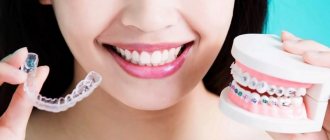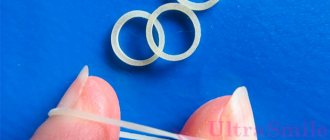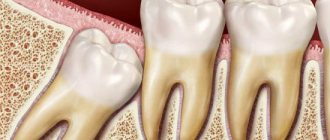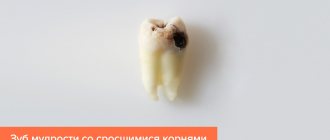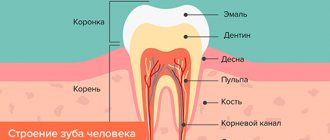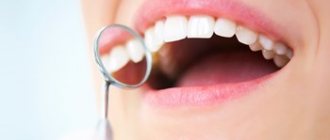The Tooth Fairy is one of the most popular characters in American folklore. A considerable part of children around the world sincerely believe in her, films and cartoons are made about her, she advertises dental services and hygiene products...
She is usually represented as a classic fairy - a little girl with wings, dressed in a beautiful dress. She flies to the children at night to pick up their lost baby teeth, and leaves a coin in their place.
Belief in the tooth fairy is believed to help children cope with the fear and anxiety caused by tooth loss. It also convinces them to be more attentive to their own health and hygiene - especially if you clarify that the fairy does not pay for rotten goods.
But why is she even doing this? Why does she need baby teeth? How much does she pay for them, and where does she even get the money?
A little about fairies
Although the tooth fairy seems like something fashionable and modern (especially to residents of the CIS countries, who learned about its existence only in the 90s), the roots of this myth go deep into history.
Spanish tooth mouse Pepper illustrated by Mariano Pedrero
Like many mythological characters, she came to America along with immigrants from Europe. Although the collector of children's teeth was not as popular there as overseas, especially when compared with ordinary fairies and elves, its analogues exist in almost all European countries and their former colonies.
In some places, instead of fairies, children are visited by angels or the souls of other children sent from heaven. However, in most cases, the role of the tooth fairy is played by mice. For example, in France these are just tooth mice, in Italy - Topolino, in Spain - the mouse Pepper. The latter also moved overseas and gained some popularity in Mexico and other Spanish-speaking countries.
If you look a little deeper into history, in the Scandinavian countries they paid for baby teeth... berserkers. Viking warriors considered such teeth to be a talisman that brought good luck in battle and sometimes made themselves entire necklaces from children's teeth. A reflection of this belief even made its way into the Eddas, where Tand-Fae is mentioned - a fairy who collects teeth. Which is the earliest description of the tooth fairy.
Where to put baby teeth
Throwing away baby teeth that a child identifies as part of himself is fundamentally wrong. And ancient signs say that proper handling of baby teeth promises health and well-being for the child.
That's why the Tooth Fairy is already waiting for a tooth!
The legend of the Fairy has been floating around the world for almost 150 years. The writer Luis Coloma first told about it to the eight-year-old King of Spain Alfonso XIII. And to this day there is not a single refutation of the fact of the existence of this good sorceress.
But how can we send valuable cargo to Fairy? Wait until evening and let the child put the tooth under the pillow himself. Be sure to say out loud the time-tested spell: “Mouse, mouse, bring the Fairy a milk tooth, and bring me a new one - bone and durable.” After this, the baby can go to bed. Surely in the morning he will find under his pillow, instead of a tooth, a small gift from the good Fairy, who is surprisingly similar to his mother.
According to legend, transportation of the tooth to its destination is carried out with the utmost care, as befits the handling of valuable cargo.
A caring gray mouse carefully takes a tooth from under a sleeping child’s pillow and gives it to the little mice, who know the way to the magical palaces very well. There they are greeted by the blond Tooth Fairy with a dazzling smile.
But why does the Fairy need millions of children's teeth from all over the world? Legend has it that she builds them into a wonderful snow-white palace with openwork walls, vaulted ceilings and carved windows. Under the rays of the sun, small teeth shine like pearls, creating a fantastic flickering light inside the palace.
Colorful, joyful dreams are born in this magnificent palace. With a light breeze, they leave the palace and scatter into the beds of those children who washed their face and brushed their teeth before going to bed. During sound sleep, children grow quickly and gain strength.
Why does the tooth fairy collect teeth?
A superstition associated with witchcraft stretches back from the Middle Ages - possessing someone else’s tooth can give power over the person to whom it belonged (therefore, especially superstitious inhabitants of the Dark Ages preferred to burn lost teeth rather than give them to a fairy, who was also considered by the church to be a lesser demon).
A not-so-kind version of the tooth fairy from Hellboy 2
This suggests a logical conclusion - for a small fee, tooth fairies gain power over a huge number of people. What some modern postmodernist creators recall - for example, Terry Pratchett in the book “Santa Hryakus”.
However, usually the tooth fairy is a positive character and does not use children’s teeth to gain world domination. You can often come across the version that she collects teeth in order to maintain children's faith in fairies. After all, if they stop believing in her, she will disappear. This option is described in the cartoon “Keepers of Dreams”.
A less popular, although also quite obvious reason is shown in the French cartoon about the French analogue of the tooth fairy “Ernest and Celestine” - mice collect teeth in order to build their underground cities with their help - their entire civilization literally stands on children’s teeth.
Help from doctors from the Shifa clinic
But, unfortunately, not all children know how to properly brush and care for their teeth. The dentists of the Shifa clinic come to the rescue. Attentive and kind doctors will conduct a preventive examination and be sure to explain to the kids:
- Which toothbrush is better to choose?
- Which pasta is more suitable for children depending on their age.
- What movements should you use to brush your teeth?
- What mouthwash is recommended to use after brushing your teeth?
- How often should you visit the dentist?
- What products will help keep your teeth white and intact?
And experts will tell adults in confidence where modern parents put their children’s lost teeth. It turns out that these organs are a source of stem cells, so they can be stored in special stem cell bank laboratories. And if you suddenly need a transplant or complex anti-oncological treatment, baby teeth will come to the rescue. This is the modern idea of medicine about these temporarily existing organs.
A milk bite does not last long, unlike a permanent one. Therefore, in order for your molars to last as long as possible, monitor their health and be sure to come for a preventive appointment with the dentist. The Shifa clinic provides comprehensive examination and treatment of the condition of the dental system. Sign up for a consultation at a convenient time!
How much does the tooth fairy pay?
(Do I need to clarify that the price for teeth is determined by parents?)
Mythology does not specify the exact price, but it is said that the fairy leaves one coin for one tooth. And money in coins in our time is much less than money in papers...
In 2013, the Visa company (the same one that produces payment cards) conducted an interesting study, during which the exchange rate of the teeth of small American capitalists in relation to the dollar was clarified - on average, a fairy leaves a child 3.7 dollars, that is, about 280 rubles in modern terms course.
What does the “tooth fairy” know about children: a story from a “creepy” office
It was very interesting to watch five-year-old Damir Gunba, who never showed any dissatisfaction. Saria Lakrba turned an unpleasant visit into a game. So, treating teeth, no matter how strange it may sound, is even fun. “We wash it with water. All! Well done! Well, you are a hero! - concludes Saria Lakrba.
For exemplary behavior, Damir was allowed to choose a balloon of his favorite color, and dentist Saria Lakrba presented the promised certificate.
Choice
Saria Lakrba says that she chose her profession on the advice of her parents.
“I wanted to become a children’s doctor from my third year, when I started specializing, but they didn’t support me. After completing residency and specialized courses, the choice fell precisely on a pediatric dentist. I haven’t regretted it for a second yet, because work brings joy. Sometimes you come home exhausted, and you don’t even want to see anyone, you don’t have the strength to talk, but if a child smiles at you, hugs you and says thank you, it’s worth a lot,” she is convinced.
The dentist revealed the secrets of how she manages to establish contact with young patients.
“Different children, not everyone will like me. I'm a human too. It happens that on the first try it is not possible to establish contact. We meet two or three times, and on the fourth time we get something done. Or I always give an alternative, I say, try to see another doctor. If purely psychologically we cannot find contact with each other, I don’t see anything wrong with that. If a child comes to me for the first time, it is much easier than if he came from another doctor. I adapt it to myself. And mostly it succeeds,” she admits.
You can find an approach to everyone if you give in a little to children’s whims and present everything in a playful way, the doctor believes.
“It is very important how parents set up their child. Words such as “prick” and “pain” should be excluded. Because we program them in advance for the fact that it may be painful, that they will give him an injection,” noted the children’s dentist. - I know how to give an injection correctly. The same Damir did not understand anything, she set him up to freeze him, although an injection was supposed to be given. There is an unpleasant moment with the needle prick, but if you distract the child, everything will go unnoticed.”
The most important thing for a child, says Saria Lakrba, is to become his friend.
“No “Hello!” How are you feeling?" and "Hello! How are you? What cartoon did you watch?”, or “What grade did you get?”, if there is a teenager at the reception. You definitely need to be aware of the release of all new cartoons. “Must know all the characters,” the children’s dentist shared her secrets. — I love working with teenagers. They are in a period when there is something to talk about. Sometimes, if the patients are 13-14 years old, I ask questions about choosing a profession, I can advise something, express my opinion.”
International Day of the Dentist is celebrated on February 9 - the Day of St. Apollonia.
When can you expect your first tooth to fall out?
The rudiments of permanent teeth are laid during the formation of the fetus in the womb. After birth, the baby begins to erupt baby teeth, which are the precursors of adult teeth. The age of teething may vary; there are cases when children are born with teeth. Most often, earlier teething implies their earlier loss.
Children's teeth fall out in the order in which they erupted, but not necessarily. This is explained by the duration of preservation of the roots of baby teeth. Before the tooth begins to emerge from the socket on its own, the root is reabsorbed, and the growing permanent tooth pushes the temporary one.
The replacement of baby teeth with permanent ones in children begins at the age of 5–6 years. However, this is an exclusively individual process, so the first baby tooth may fall out earlier, or vice versa, much later. Normally, at the age of 8, a child should already begin the process of changing teeth. If teeth have not begun to fall out, you should consult a dentist to predict the eruption of permanent teeth in order to exclude a delay in the process due to irregularities.
The lower incisors, located in the center, fall out first. These will be followed by the upper incisors. At the age of 7–8 years, the lateral incisors will fall out. The process is then temporarily suspended. By the age of 9–10 years, the child’s baby teeth begin to fall out again. And by the age of 14, most children have formed a full row of teeth, with the exception of the eighth molars, which are also called “wisdom” teeth. In addition to 20 baby teeth, the teenager will already have a set of permanent teeth that had no predecessors.
Teeth “as a keepsake” - is it worth keeping?
The first baby teeth are of great importance for mothers, not only when they erupt, but also when they fall out. Many mothers keep things that are memorable to them from their baby (tags from the maternity hospital, a footprint and handprint, a cut lock of hair, etc.). When milk teeth are replaced by permanent ones, mothers do not always decide to throw away the teeth, so they store them along with other things the child has that are dear to them.
But is it possible and worth saving baby teeth? There are many beliefs about where a child's teeth should be placed. Some are inclined to dispose of them, while others, on the contrary, attach great importance to this moment and the tooth itself. Disposal does not have any bad consequences, just like storing the tooth. If you leave a baby tooth at home, over time it may simply crumble or dry out.
The storage of baby teeth can be approached from the other side - scientifically. British scientists have proven that stem cells can be extracted from the pulp of a baby tooth, which are increasingly used in the fight against serious diseases and in cosmetology. Scientists were also able to prove that dental pulp stem cells are “stronger” than those obtained from the umbilical cord connecting mother and child. But the properties of a tooth can only be preserved if it is stored correctly. To do this, you can contact the stem cell center.
Signs of different nations
Modern people prefer not to believe in omens or to hide their superstition. Some traditions remain, but most of the absurd beliefs are still a thing of the past. Thus, in ancient times, it was believed that not only milk, but also permanent teeth must be disposed of after they fall out or are removed, since sorcerers, witches or magicians can steal them and use them for rituals or conspiracies. Each nation had its own examples and beliefs, which often have many similarities.
English
In Great Britain it was customary to burn baby teeth as soon as they fell out. In this way, parents prevented the risk of damage to the child or the entire family. The British were also of the opinion that if you bury a tooth in the ground, a healthy and strong tooth will definitely appear in its place.
Slavs
The Slavic tradition was closer to our people. Children believed that after a tooth fell out, it was necessary to put it behind the stove or in some corner, where a mouse or brownie would definitely find it and take it. The baby tooth was replaced by a healthy permanent one.
Europeans
A somewhat interpreted belief existed in European countries, where they believed that the tooth should be placed under the pillow, from where a small mouse would take it. In return, she would leave treats or a coin. This tradition is maintained by most families today.
Gypsies
After a baby tooth fell out, at night it was buried deep in the ground, while reciting a spell, or thrown into a field on the moon. Thus, good luck was attracted to the child, which was supposed to accompany him all his life.
